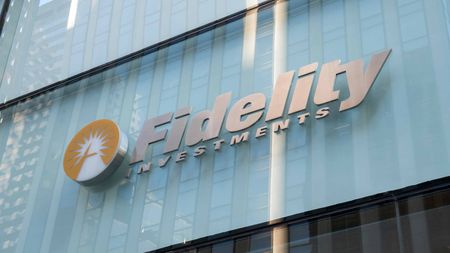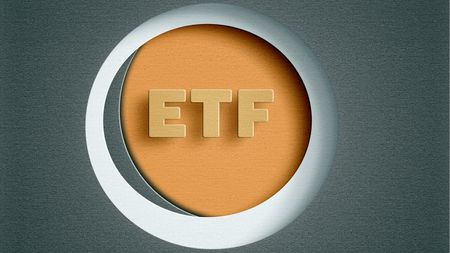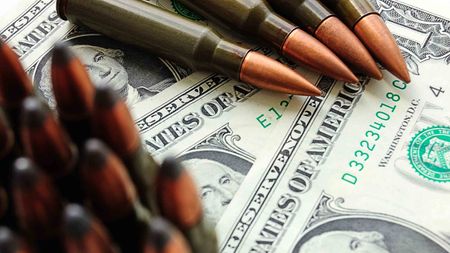New Way to Ride Nuclear's Revival
A recently launched ETF provides access to an industry that's making a comeback.
Nuclear power, long reviled as a dangerous source of energy, is on the verge of a comeback. That's because a growing body of scientists, politicians and environmental activists see atomic energy as part of the solution for global warming and our ever-growing dependence on foreign oil, much of it from nations that, if not downright hostile toward us, certainly don't share our values.
Investors who want to ride nuclear's revival without betting on individual stocks have a new option. Invesco PowerShares last month launched an exchange-traded fund called the Global Nuclear Energy Portfolio (symbol PKN). The ETF tracks the performance of the World Nuclear Association (WNA) Energy Index, which contains 64 companies that design, construct and operate nuclear power reactors. The shares closed at $27.08 on May 8.
ETFs are funds that track a particular index and trade on exchanges just like stocks. ETF prices move up and down, in line with the value of the securities they hold. ETFs contain mechanisms that keep the share prices close to the value of their holdings.

Sign up for Kiplinger’s Free E-Newsletters
Profit and prosper with the best of expert advice on investing, taxes, retirement, personal finance and more - straight to your e-mail.
Profit and prosper with the best of expert advice - straight to your e-mail.
The nuclear industry has been under a cloud for much of the past three decades, mostly because of concerns over accidents at such places as Three Mile Island, in Pennsylvania, and Chernobyl, in Ukraine.
Why is resistance to nuclear subsiding? Nuclear power emits relatively small amounts of greenhouse gases, which are thought to be responsible for global warming. Moreover, spent nuclear fuel is compact and, unlike carbon dioxide emissions, can be easily transported to waste-storage facilities (although there is considerable controversy over where those facilities should be located).
Meanwhile, global energy demand will rise by 50% between 2005 and 2030, the International Energy Agency predicts. "At the same time that our planet has growing global power needs, governments are trying to cut greenhouse gas emissions," says Richard Phillips, an analyst with S-Network, which co-developed the WNA index. "Policy officials recognize that nuclear energy needs to be part of the mix of alternative sources."
Nuclear power produces about 16% of the world's electricity, but that proportion is likely to grow. There are 27 reactors currently under construction around the world.
The index tracked by the Powershares ETF weights companies according to the percentage of revenues that come from nuclear activities. Power generators account for one fourth of the fund's assets, while technology companies, equipment makers and related service providers represent another quarter. Most of the remainder of the assets are spread among fuel sources, reactor vendors and construction companies.
The ETF's biggest holding, at 8.5% of assets, is Areva (ARVCF.PK), a French company. "Areva is one of just a handful of publicly traded companies in the world that both designs and builds reactors," says Phillips.
Other big holdings include Japan's Toshiba (TOSBF.PK), Emerson Electric (EMR) and Canada's Cameco (CCJ), a leading producer of uranium, the raw material that becomes fuel for nuclear reactors.
The PowerShares product isn't the only nuclear ETF. Van Eck's Market Vectors Nuclear Energy ETF (NLR) seeks to mirror the DAXglobal Nuclear Energy index. The Van Eck ETF, which closed at $32.58 on May 8, has lost 16% since its inception last July.
Market Vectors, which holds 35 stocks, shares a number of common holdings with the PowerShares ETF. But the funds emphasize different parts of the industry. Market Vectors has a 42% weighting in companies that mine uranium, giving it the flavor of a natural-resources fund. PowerShares Global Nuclear tilts more toward companies that will build new plants and modernize some of the 439 existing facilities.
Because these are narrow sector funds, they should play only a minor role in your portfolio. While nuclear energy holds promise as one of the solutions for global warming, hurdles remain, not least of which is the matter of disposing of the spent fuel. And an accident at a nuclear plant would be calamitous for the stocks.
The annual expense ratio for Market Vectors Nuclear Energy is 0.65%. For PowerShares Global Nuclear Energy, it's 0.78%.
Get Kiplinger Today newsletter — free
Profit and prosper with the best of Kiplinger's advice on investing, taxes, retirement, personal finance and much more. Delivered daily. Enter your email in the box and click Sign Me Up.
-
 April RMD? Five Tax Strategies to Manage Your 2025 Income
April RMD? Five Tax Strategies to Manage Your 2025 IncomeTaxable Income The April 1, 2025, deadline for required minimum distributions (RMDs) is fast approaching for retirees who turned 73 in 2024.
By Kelley R. Taylor Last updated
-
 Rising AI Demand Stokes Undersea Investments
Rising AI Demand Stokes Undersea InvestmentsThe Kiplinger Letter As demand soars for AI, there’s a need to transport huge amounts of data across oceans. Tech giants have big plans for new submarine cables, including the longest ever.
By John Miley Published
-
 The 5 Best Actively Managed Fidelity Funds to Buy Now
The 5 Best Actively Managed Fidelity Funds to Buy Nowmutual funds In a stock picker's market, it's sometimes best to leave the driving to the pros. These Fidelity funds provide investors solid active management at low costs.
By Kent Thune Last updated
-
 The 12 Best Bear Market ETFs to Buy Now
The 12 Best Bear Market ETFs to Buy NowETFs Investors who are fearful about the more uncertainty in the new year can find plenty of protection among these bear market ETFs.
By Kyle Woodley Published
-
 Don't Give Up on the Eurozone
Don't Give Up on the Eurozonemutual funds As Europe’s economy (and stock markets) wobble, Janus Henderson European Focus Fund (HFETX) keeps its footing with a focus on large Europe-based multinationals.
By Rivan V. Stinson Published
-
 Vanguard Global ESG Select Stock Profits from ESG Leaders
Vanguard Global ESG Select Stock Profits from ESG Leadersmutual funds Vanguard Global ESG Select Stock (VEIGX) favors firms with high standards for their businesses.
By Rivan V. Stinson Published
-
 Kip ETF 20: What's In, What's Out and Why
Kip ETF 20: What's In, What's Out and WhyKip ETF 20 The broad market has taken a major hit so far in 2022, sparking some tactical changes to Kiplinger's lineup of the best low-cost ETFs.
By Nellie S. Huang Published
-
 ETFs Are Now Mainstream. Here's Why They're So Appealing.
ETFs Are Now Mainstream. Here's Why They're So Appealing.Investing for Income ETFs offer investors broad diversification to their portfolios and at low costs to boot.
By Nellie S. Huang Published
-
 Do You Have Gun Stocks in Your Funds?
Do You Have Gun Stocks in Your Funds?ESG Investors looking to make changes amid gun violence can easily divest from gun stocks ... though it's trickier if they own them through funds.
By Ellen Kennedy Published
-
 How to Choose a Mutual Fund
How to Choose a Mutual Fundmutual funds Investors wanting to build a portfolio will have no shortage of mutual funds at their disposal. And that's one of the biggest problems in choosing just one or two.
By Coryanne Hicks Published